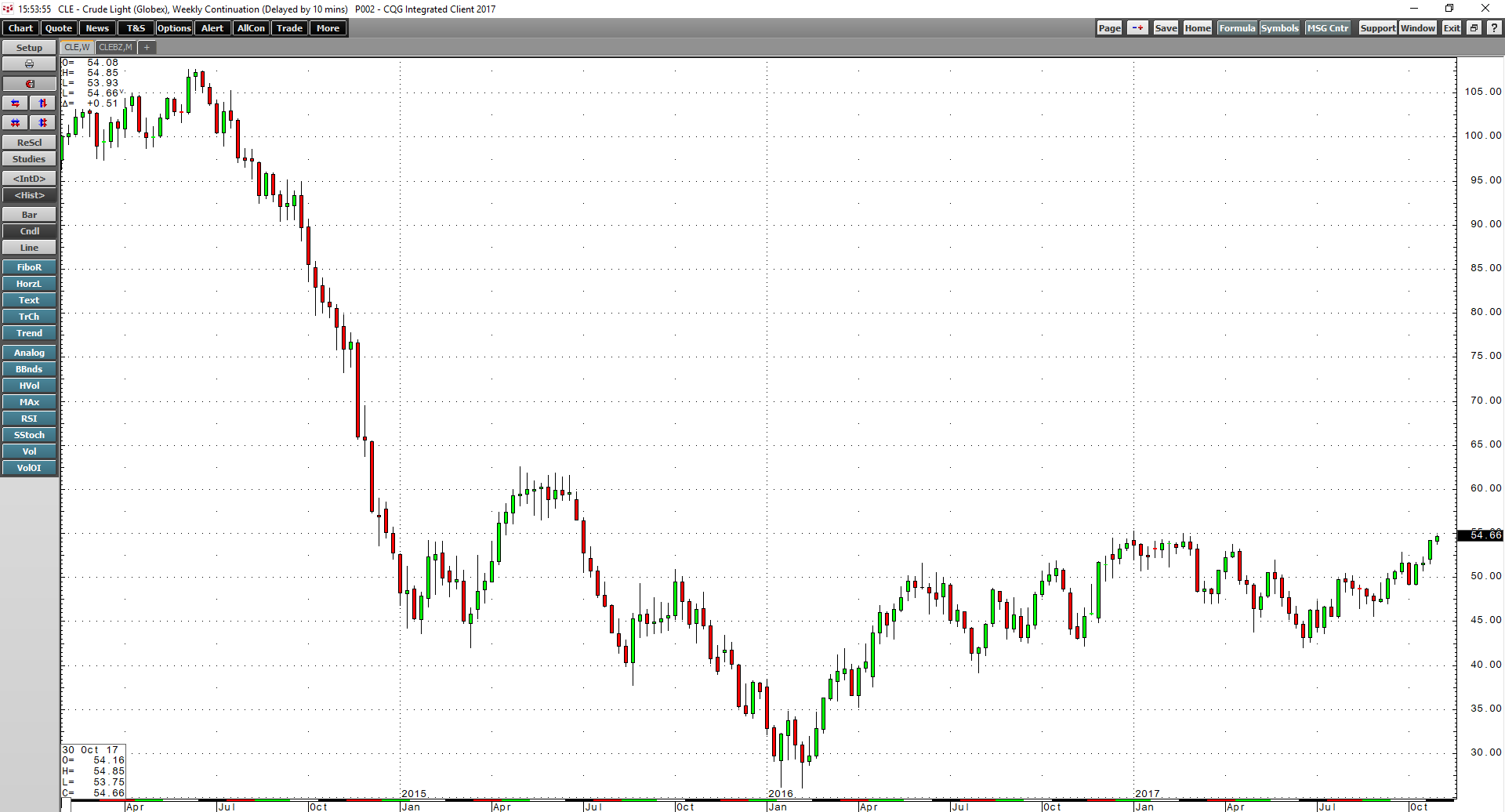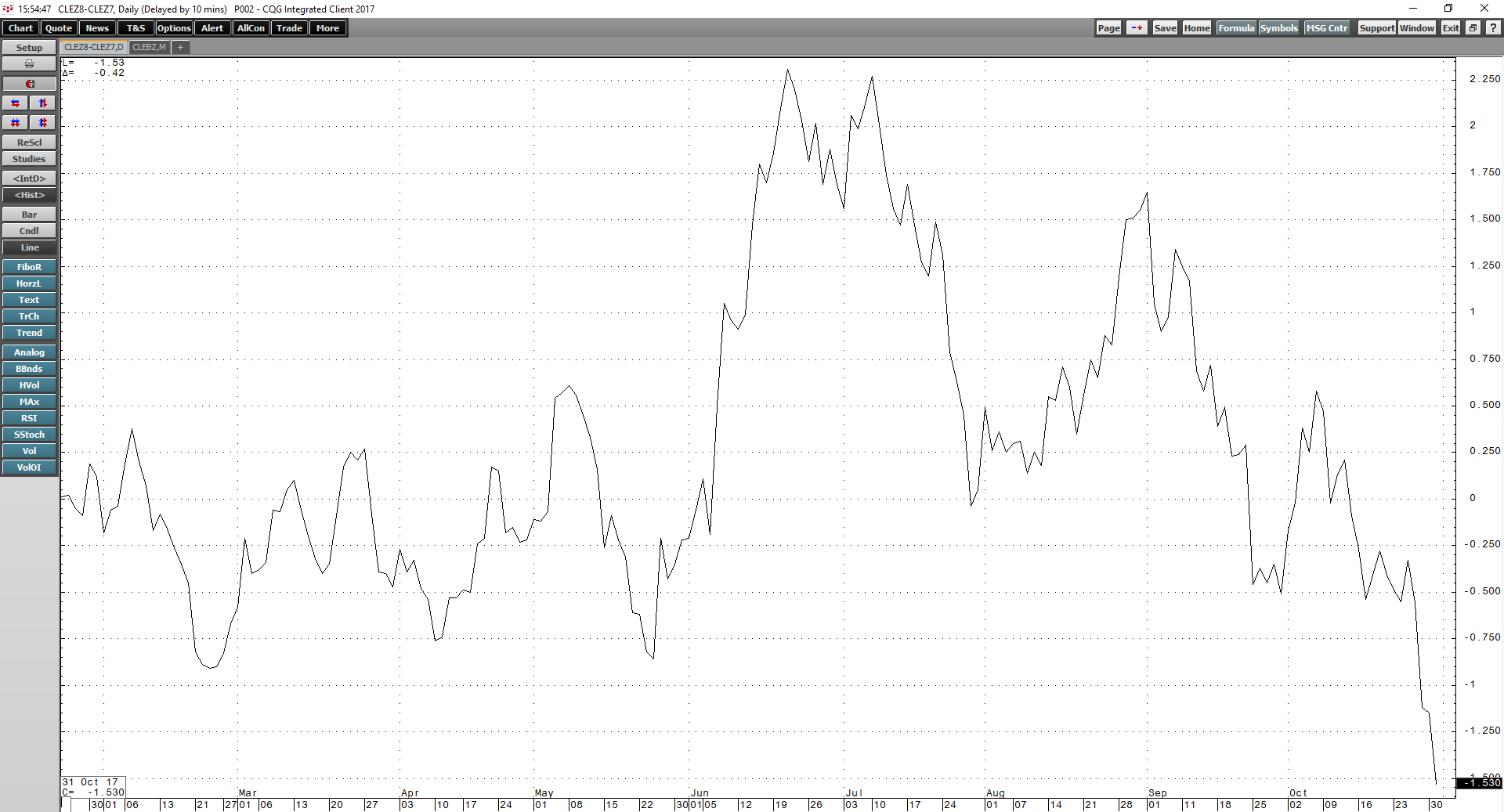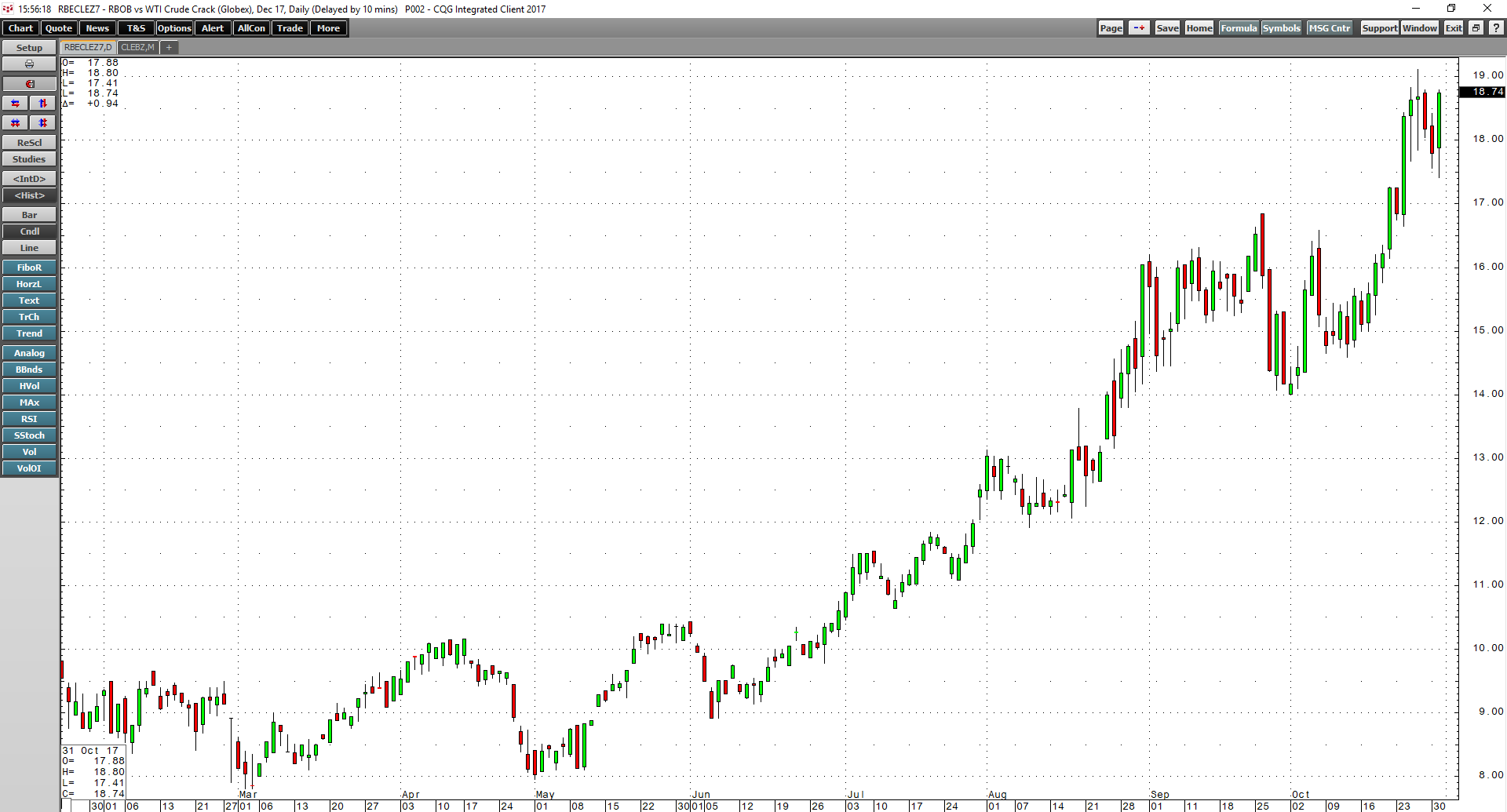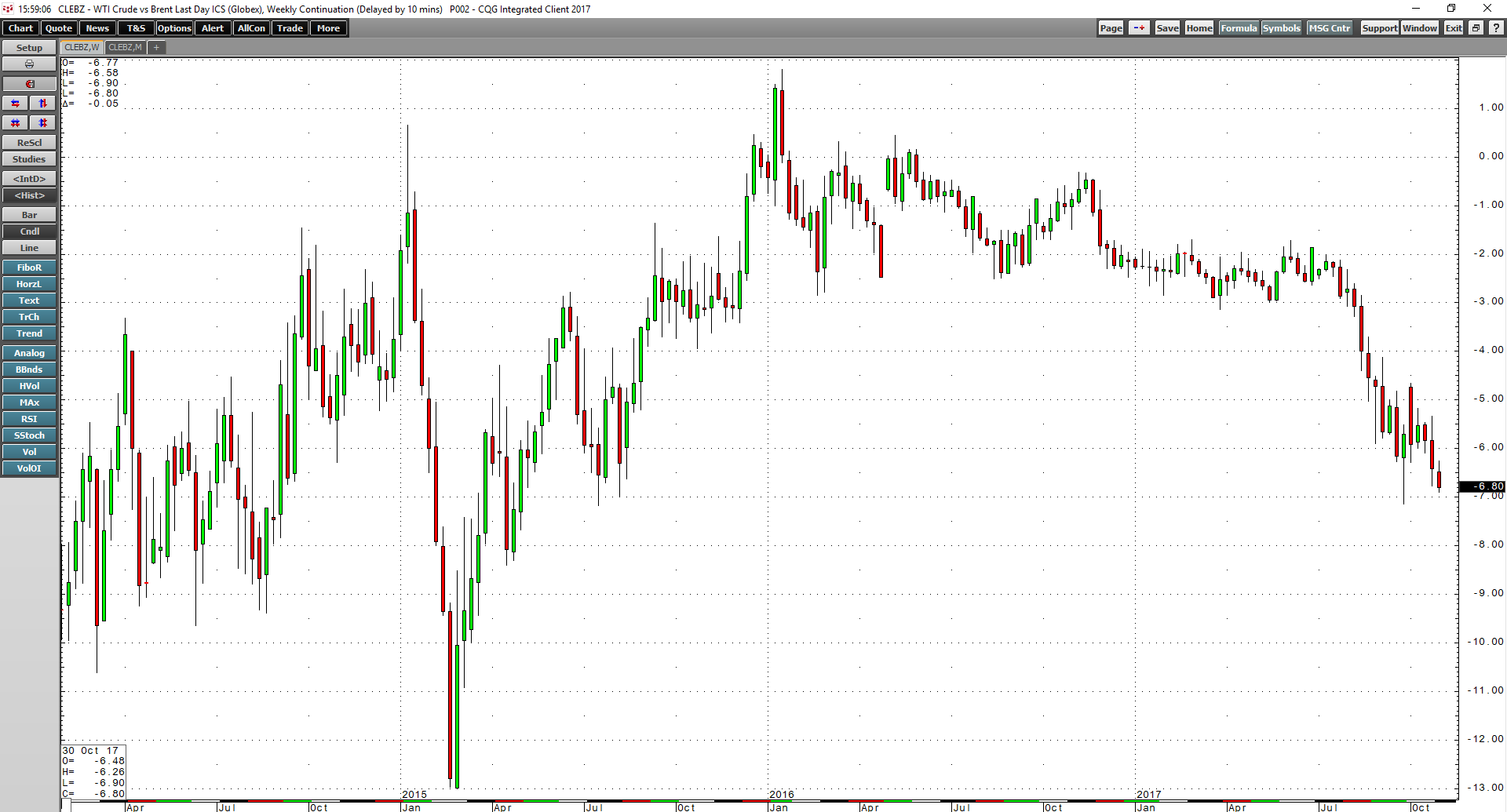Crude oil is the energy commodity that continues to power the world. While many new and exciting energy products will likely take away some of oil’s market share in the years to come, the fact is that today oil remains essential for consumers around the world. We drive cars requiring gasoline, and in many cases heat homes and business with heating oil that are both oil products. We fly on planes and buy goods that come to market via trucks and other modes of transport powered by distillate products. While technology will continue to evolve and renewable energy sources will slowly replace oil’s primary role, in the coming months and even years the demand for oil will remain steady. If economic conditions around the globe continue to improve, we are likely to find even more requirements for the traditional energy commodity.
NYMEX nearby crude oil futures fell to a low of $26.05 per barrel in February 2016, and since then the price has more than doubled. At the same time, the price of the energy commodity is around half the value it traded in June 2014, before the bear market took it to its early 2016 nadir. We are now in the final stretch of 2017 with a little under two months left to go in the year, and many signs are pointing to a new peak for the price of oil this year before it comes to an end.
Higher Lows and Higher Highs Since June 21
Crude oil hit its low for 2017 on June 21, when the price fell to $42.05 per barrel on the active month futures contract on the New York Mercantile Exchange.
As the weekly chart highlights, the energy commodity slipped just 15 cents below technical support at $42.20, which was the November 2016 low. The false breakdown in the price of oil had many analysts calling for a test of $40 per barrel or lower, but since then the price has been making higher lows and higher highs. While crude oil has climbed back above the $50 per barrel level, market structure in the oil market remains supportive for even more price gains before the end of 2017. Projecting the future path of least resistance for the price of NYMEX crude oil is a difficult task, but the market structure for the energy commodity tends to provide valuable clues, and right now those indicators are pointing to the upside.
Term Structure Tightens
Term structure in a commodities market is the shape of the forward curve. When deferred prices are higher than nearby, the market is in contango, which typically indicates supply-demand equilibrium or more available supplies than demand. Conversely, backwardation is a condition where deferred prices are lower than nearby, and it tends to point to a market where current demand is higher than supplies.
The chart of the December 2018 minus December 2017 crude oil spread illustrates that it moved from a $2.31 contango in June to its current level around a $1.50 backwardation. Crude oil for delivery in December 2018 is lower than for December 2017, which is a sign that nearby demand is higher than supplies. The condition of backwardation also is present in the Brent futures contract, which was trading at an even wider $2.80 for the same time horizon on the final day of October. The term structure is telling us that the oil market is tight. That is supportive for the price of the energy commodity.
Processing Spreads Support the Price
Oil product prices often provide the first line of clues when it comes to demand for crude oil. Crude oil is the input in their production through the refining process. When processing or crack spreads move higher, it is a sign that demand for oil-based energy is on the rise.
As the daily chart of the December gasoline crack spread shows, the upward trend in the refining spread is an indication of increasing demand for gasoline. When the crack spread rises, it means that the oil product is outperforming the price of crude oil. Both crude oil and gasoline prices have been heading higher, but gasoline has done even better than the raw oil. Moreover, the peak season for gasoline ended in early September and the gasoline crack has continued to rally, which is another sign that demand for the fuel is strong.
The daily chart of the December heating oil crack spread, which is a proxy for other distillate fuels, has also been rising over recent months as the price of the processed fuel has outperformed crude oil. At the end of October in 2016, the price of nearby NYMEX crude oil futures was at the $46.76 per barrel level at the end of October. Active month December crude oil futures closed on October 31 at $54.38 per barrel, over 16% higher than last year at this time. The fact that processing spreads are even higher with crude oil moving to the upside makes the supportive nature of crack spreads even stronger at this time.
The Brent Premium Works Its Way Higher
Two-thirds of the world’s crude oil use the Brent benchmark for pricing purposes. Brent is a heavier crude oil than NYMEX WTI crude oil and it has higher sulfur content. Brent tends to be a better choice for refining when it comes to distillates, and WTI is more suitable for processing into gasoline. Since most of the crude oil produced in Europe, Africa, and the Middle East use the Brent benchmark, the spread between the two crude oils serves as both a quality and a location spread in the oil market. Brent versus WTI can serve as a barometer of political risk in the world of the energy commodity. At the same time, it often monitors demand from one of the world’s leading consumers: China.
As the weekly chart of the price of NYMEX-WTI minus ICE-Brent crude oil futures illustrates, the spread has moved from a $2 premium for Brent in June 2017 to highs of a $7.15 premium in September. The Brent premium was most recently trading at around the $6.80 per barrel level. The increase in the premium for Brent is likely the result of several factors: As the price of WTI moved above the $50 per barrel level, the market witnessed an increase in hedging from shale producers in the US depressing the price of WTI compared to Brent. At the same time, China has been a significant buyer of industrial raw materials over recent months, and it is likely they have been adding to the nation’s strategic petroleum reserves, causing upward pressure on the price of Brent compared to WTI. Finally, OPEC will meet at their bi-annual gathering in Vienna on November 30, and market expectations are for the cartel to extend production cuts by member nations from the end of Q1 2018 to the end of the coming year. With the Saudi Aramco IPO scheduled for the second half of 2018, the Saudis will stand behind an extension as will the other members who will benefit from a higher price for crude oil.
Market Structure Supports a New High for 2017 before the End of This Year
Market structure in the crude oil market, from processing spreads to term structure, and quality and location spreads favor the upside for the energy commodity as we head into the final two months of 2017. Critical technical resistance for nearby NYMEX crude oil futures currently stands at $55.24 per barrel, the January high. With the price of crude oil approaching that level, and Brent futures trading above the $60 per barrel mark, it is likely we will see a higher high in 2017 before the end of this year. However, keep in mind that when crude oil made a new low for the year in June, many were calling for even lower prices. It is possible that the current rally will run out of upside fuel just like the dip ran out of downside momentum before the beginning of the summer. Keep an eye on market structure in the crude oil market for clues over the coming weeks. The price of crude oil is a complicated puzzle, but the pieces of market structure can help traders and investors put together logical clues that often shed light on the path of least resistance and the next move in the energy commodity.
On the final day in October, the American Petroleum Institute reported that crude oil inventories declined by over 5 million barrels for the week ending on October 27. Declines of 7.7 million barrels of gasoline and 3.11 million barrels of distillates could fuel the price of the energy commodity to the upside above technical resistance as it goes into November, the month of the OPEC meeting.




